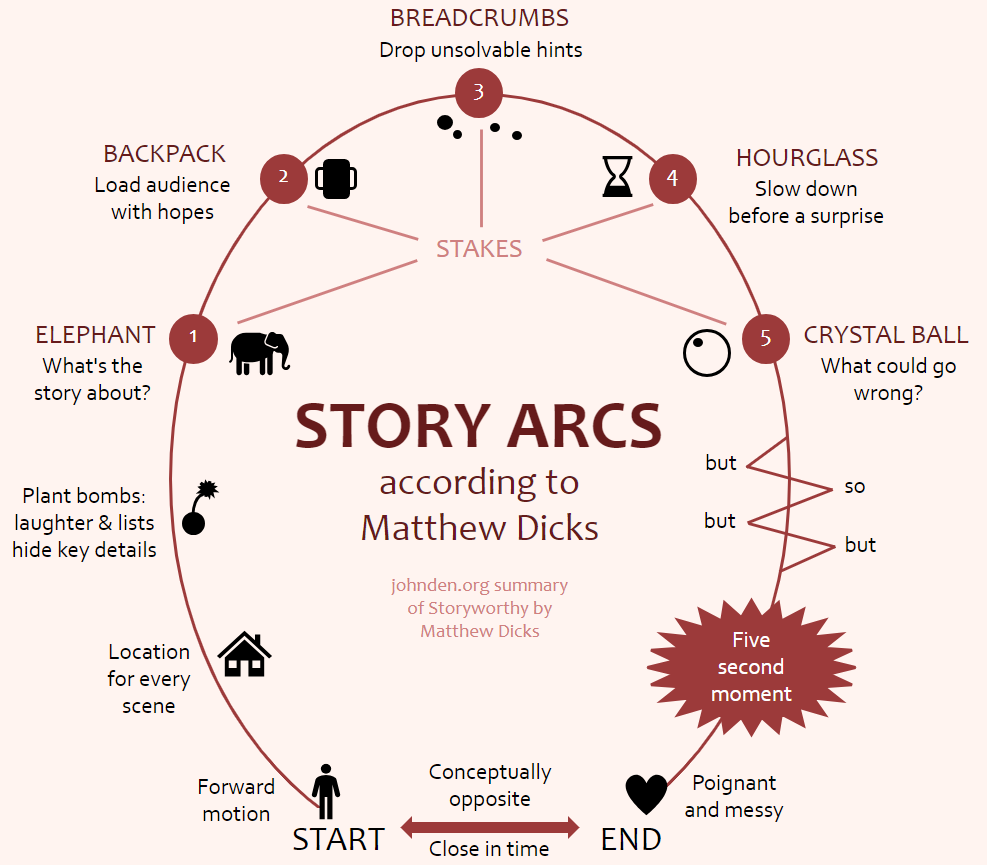Story Arcs according to Matthew Dicks
For in Calormen, story-telling (whether the stories are true or made up) is a thing you’re taught, just as English boys and girls are taught essay-writing. The difference is that people want to hear the stories, whereas I never heard of anyone who wanted to read the essays.
C.S. Lewis, The Horse and His Boy, The Chronicles of Narnia
While researching memory palaces, I came across Nelson Dellis’s recommendation of Storyworthy by Matthew Dicks. I had no plans to tell stories, but I was intrigued by the strong reviews, so I decided to give it a go. I am glad I did. I still have no plans to tell stories, at least not in a ‘story slam’ style, but the book was fascinating and went far further than the simplistic ‘man in hole’ or ‘beginning middle end’ structures I’ve seen elsewhere.
The only problem was, I listened to the audiobook, and it’s hard to remember all of Matthew’s great advice. After returning to select chapters for the third or fourth time, I realised this book needs a summary diagram to jog my memory. And the concept of a ‘story arc’ lends itself nicely to an arc-shaped diagram, so I decided to draw one. Here it is:

According to the author, all stories revolve around a relatable ‘five second moment’ of change, that makes a strong contrast between the start and the end. The audience needs a location to visualise each scene, and the storyteller can build suspense through ‘buts’ and ‘therefores’ and careful use of stakes. There is lots more in the book than I could comfortably fit in one diagram. Recommended.